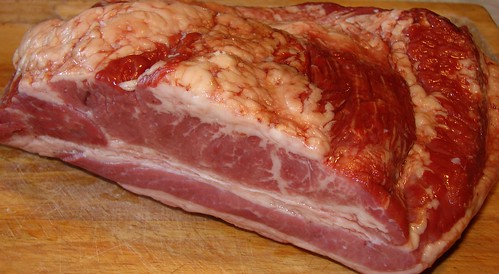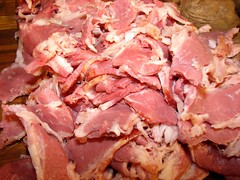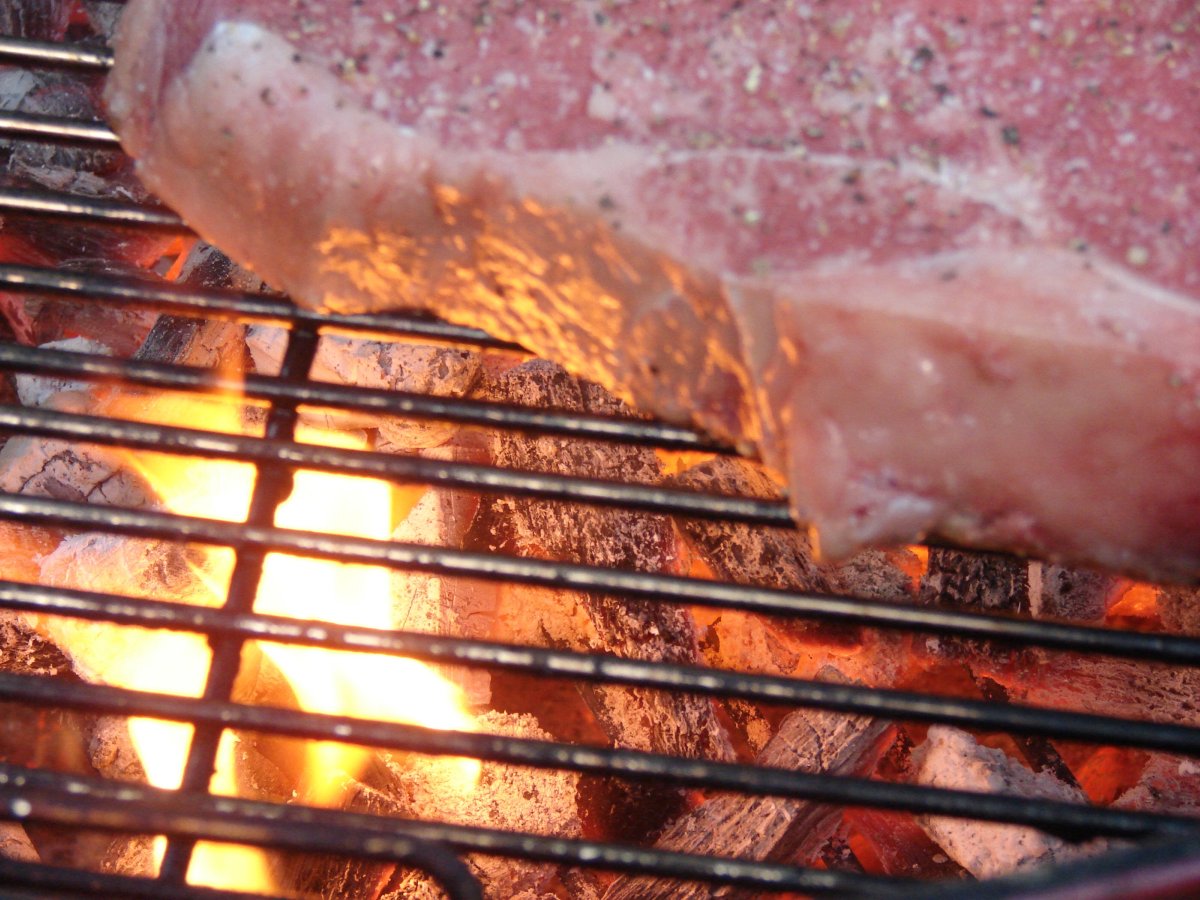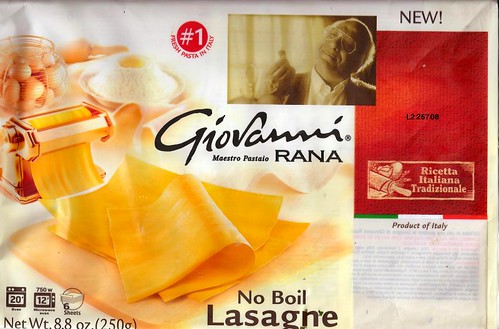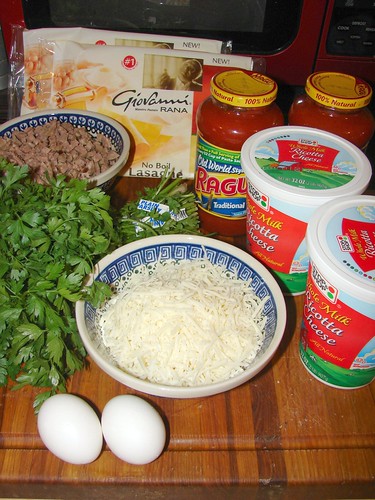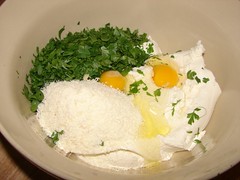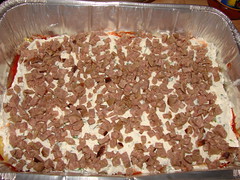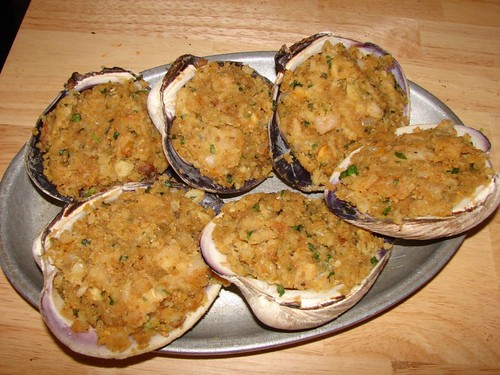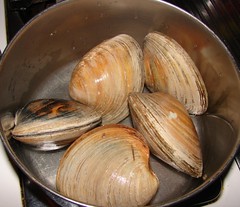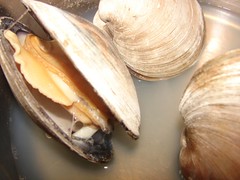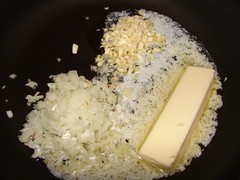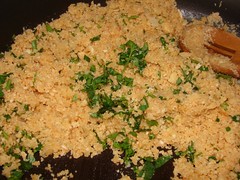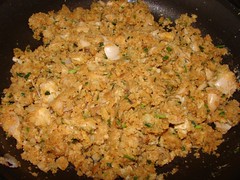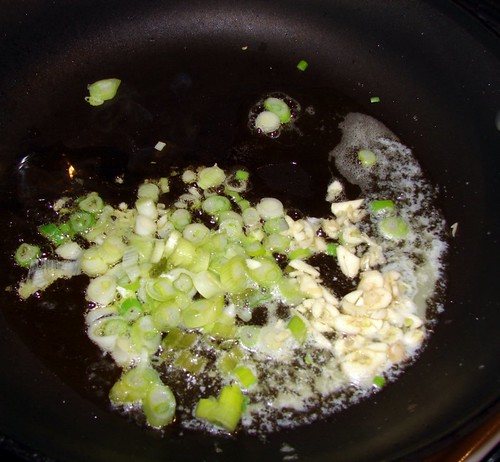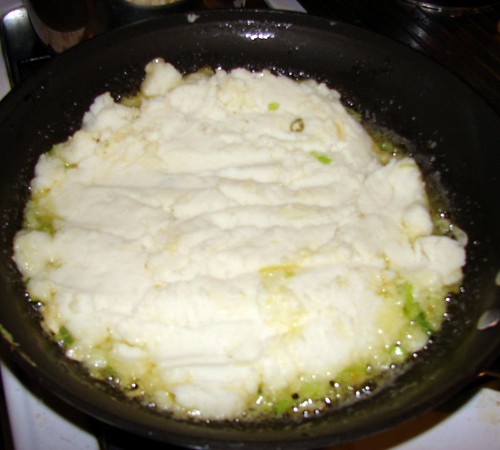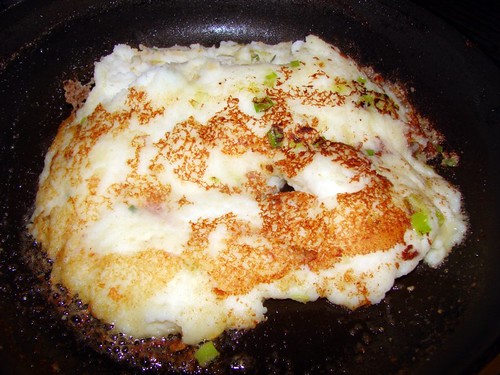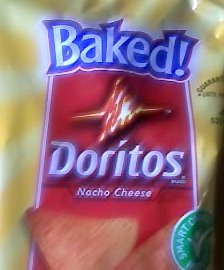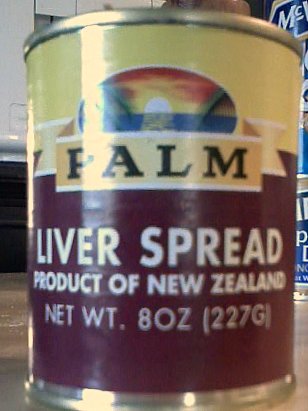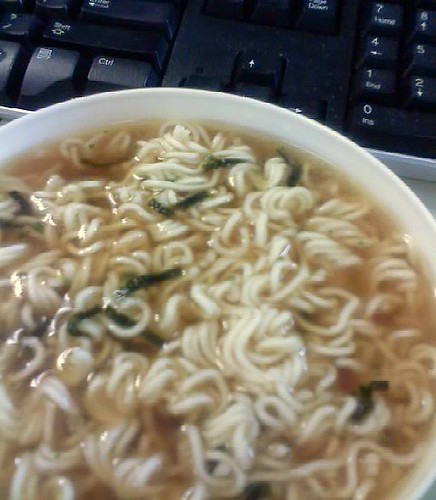I'm always searching for new and exciting ways to prepare my homemade bacon. It occurred to me that marinating the pork in liquor before starting the actual cure would add an extra dimension to the flavor, and one that would be deeper than simply soaking the wood chips in whiskey.
I decided to cure six separate 2-pound slabs of pork: five slabs each with a different liquor and a sixth slab cured without liquor in my standard bacon brine as a control. (The brine recipe can be found at the bottom of this blog entry.)
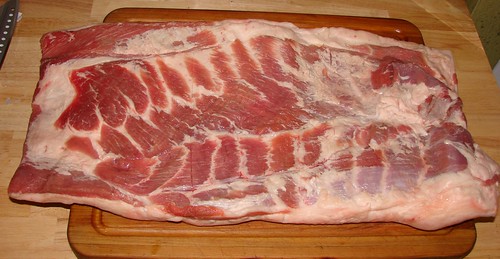
I started off with a beautiful 13-or-so pound pork belly from the local wholesale butcher. I cut it into thirds, and then cut each third in half, winding up with six approximately equal square slabs.
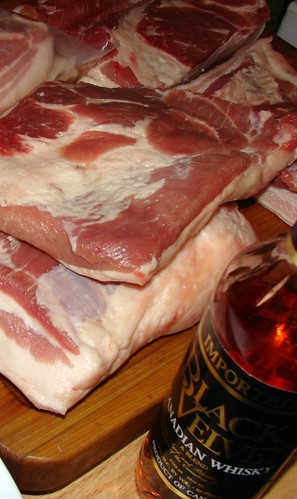
Here we see the slabs of pork, cut and ready for the marinade, along with one of the whiskeys used. Although I didn't feel that it was important to use top-shelf premium liquors for the bacon, I also didn't want to use the very cheapest store-brand swill, either. So I selected relatively inexpensive yet reputable national brands:
- Black Velvet Canadian Whiskey
- Jim Beam Bourbon
- Bacardi White Rum
- Southern Comfort
Each of the liquors was added to one slab of pork, except for the Black Velvet; two slabs of pork marinated in that, but the cures were different - one slab cured in brine made with brown sugar (standard) and the other cured in brine made with maple sugar.
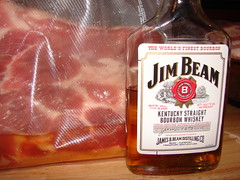
I made pouches for my vacuum sealer large enough to accomodate the meat and a couple of cups of liquor. I placed each slab into a pouch, poured in the liquor, then pulled as much of the air out of each pouch as possible before sealing it, so the pork was immersed as much as possible in the liquor.
Each pouch was labeled after sealing.
I put the pouches into the refrigerator, and turned them every so often to ensure an even marinade. They stayed in the fridge for two days.
At the end of the two-day marinade I opened the pouches, poured off most of the liquor (leaving some behind for flavor) and added enough standard brine to completely submerge the slab. Then I resealed them and refrigerated the pork again to cure.

Seven days later, I drained and dried each of the slabs, and stuck them with toothpicks so I could tell them apart. In the picture on the left, they're all loaded into the smoker and have just started to smoke. You can see the toothpicks sticking out of the meat.
I held them over the smoke for a little more than two hours at 250 degrees F and they turned out fantastic! After allowing the bacons to cool somewhat, my wife and daughter joined me for a tasting. The results:
- The Canadian Whiskey with standard cure has a hint of whiskey and caramel, but there isn't a lot of difference between this one and the control - certainly not enough of a difference to justify the added expense.
- The Canadian Whiskey with the maple sugar cure is a lot nicer. A bit sweet, but pleasantly so; the caramel overtones in the whiskey complimented and accented the maple and made this cure much more worthwhile than the plain Canadian.
- The Rum-cured bacon is delicious, one of the best bacons I have ever had. The rum flavor held up beautifully to the cure and the smoke; one of our favorites.
- The Bourbon also stood up well to the smoke and the cure, and delivered a rich, full bourbon flavor with delicious hints of vanilla and caramel. Another favorite, and another cure I will happily use again.
- Southern Comfort gave me the most surprising results, because I really don't like the stuff to drink. None of the faintly citrus notes survived the cure or the smoke, but the bacon has a wonderful whiskey flavor accented with toasted cane sugar reminiscent of cotton candy. It's quite good, and as a result I'd be happy to make this variety of bacon again. Good thing, too, because somehow I've managed to acquire two bottles of Southern Comfort, and I have no intention ever to drink the nasty stuff.
A note about the smoke:Most of the time, I smoke bacon over hickory or apple chips, sometimes adding a bit of mesquite for the touch of "spiciness" it lends. This time, though, I used chips packaged by "Charmglow" which were labeled as being "oak whiskey barrel chips." Although there might be some old oak whiskey barrel chips in the bag, they were thoroughly adulterated with hickory and mesquite. I was disappointed because my intention was to make whiskey-cured bacon smoked over whiskey-barrel chips, but at least the smoke was flavorful and the final results were good.
If you've been grilling for a long time, you might remember Charmglow as the manufacturers of rugged gas grills that lasted seemingly forever. Well, you can lose that notion right now. Home Depot has owned the name since 2004, and the grills are now shoddy low-end things made in China by the lowest bidder.
I like to use brine to cure my homemade bacon because I hot-smoke it, turning out a Russian-style bacon that can be eaten chilled as is, or sliced and further cooked. Brine-cured bacon retains more moisture and holds up to the hot smoking process better than dry rubbed cures, which draw moisture out of the pork.
It's also a convenient way to cure bacon during the summer. In the winter, I can hang meats to cure in my attic - it stays cold up there, and the humidity is fairly constant. In the summer, that's not an option, so brine cures in the fridge are the only way to go for me.
Dave's Standard Bacon Brine
1 gallon water
1 cup kosher salt
1/2 cup brown sugar
1 tsp Morton TenderQuick
Mix thoroughly until everything is dissolved; submerge pork in solution for 4 to 8 days.
One of the nicest things about this brine is its versatility. Experiment with it by adding mustard seed, cracked black peppers, bay leaves, sprigs of fresh thyme, or sliced garlic. The flavors will surprise you, and the bacon you make will be sought-after by family and friends.
.






